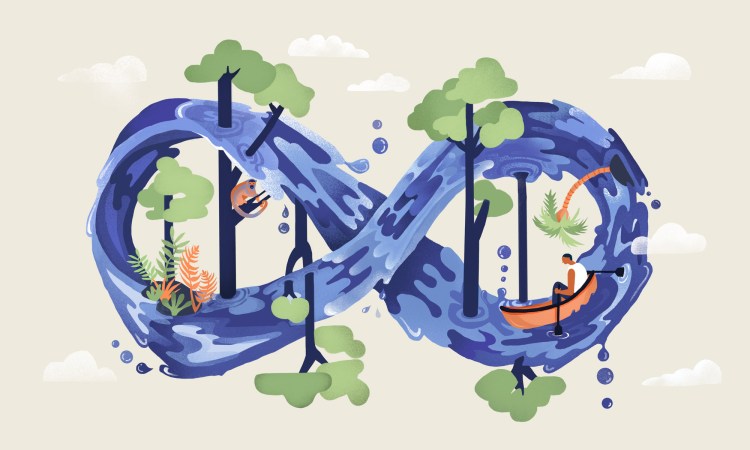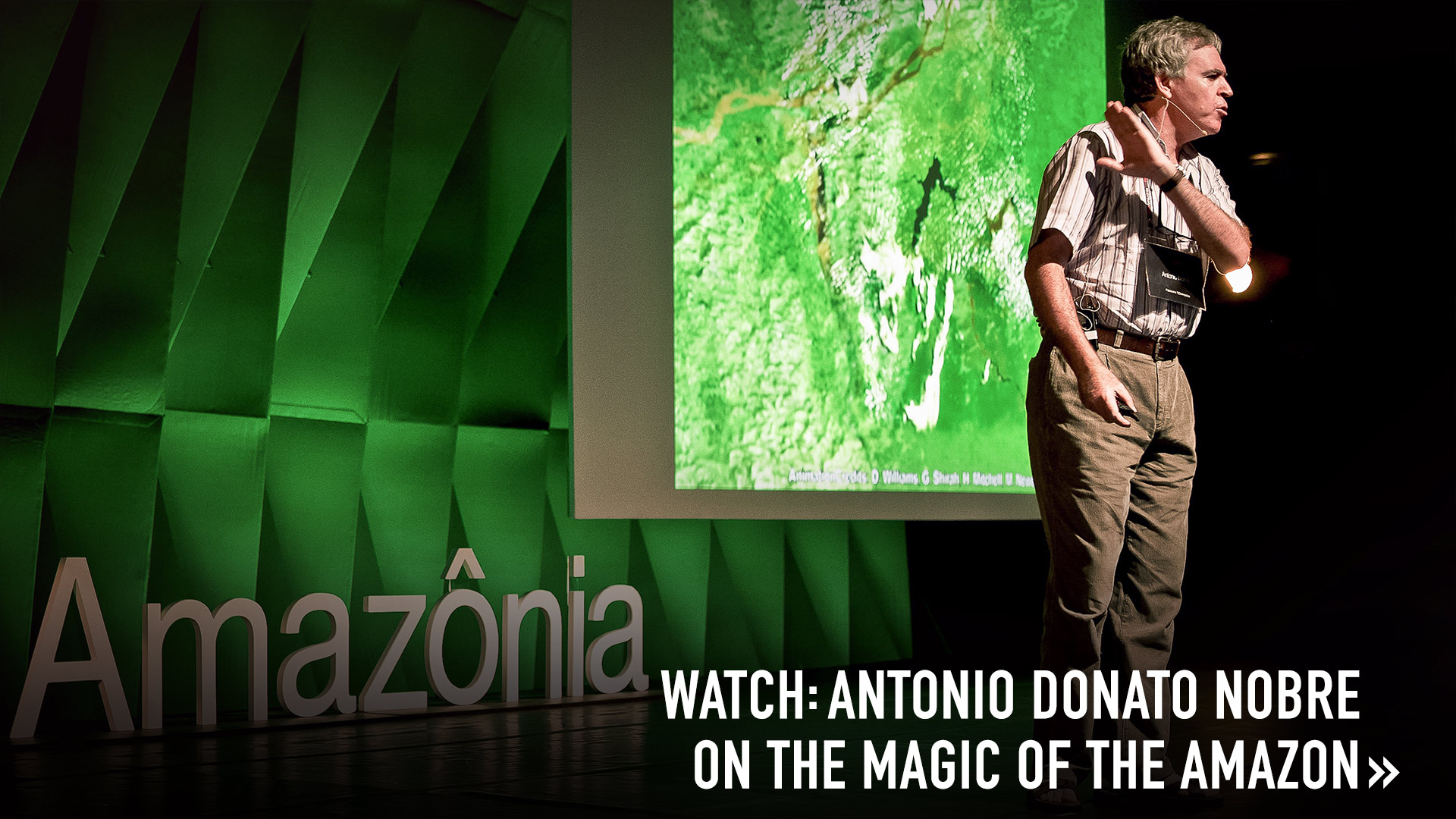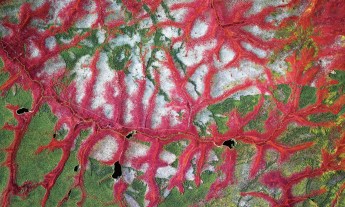
On a typical sunny day in the Amazon, 20 billion metric tons of water flow upward through the trees and pour into the air, an invisible river that flows through the sky across a continent.
“This river of vapor that comes up from the forest and goes into the atmosphere is greater than the Amazon River,” says Antonio Donato Nobre (TED Talk: The magic of the Amazon: A river that flows invisibly all around us). Nobre is a senior researcher at Brazil’s National Institute of Amazonian Research. And in his opinion, the most remarkable thing about the Amazon — even more than its 4,000 miles of river or its hundreds of billions of trees — is that it’s essentially a massive, solar-powered sprinkler system, spritzing water across a continent. If this were a man-made system, Nobre says, it would be the envy of the world. Here’s why Nature is the most badass engineer of all.
Every tree is a silent geyser. Through a process called transpiration, a large tree in the Amazon can release 1,000 liters of water into the atmosphere in a single day. “There is a frantic evaporation taking place here,” Nobre says. He likens the force to a geyser spouting water into the air, but “with much more elegance.” After all, geysers draw their power from the scalding heat of magma, while trees only need to bask in the sunlight to release their invisible steam. Plus, they have the sheer force of numbers; hundreds of billions of trees in the jungle release as many as 20 billion metric tons of water into the atmosphere every day. That means that while the Amazon, which pours 17 billion tons of water into the Atlantic Ocean a day, may be the largest river on earth — it’s still exceeded by the airborne river drifting above the canopy of the trees.
The airborne river turns into rain, which replenishes the forest. Rainforests create their own rainclouds, replete with microscopic spores, pollen and fungi, or “smells” as Nobre calls them. These smells are critical for the lifecycle of the jungle, as the steam from the trees condenses around these microscopic particles, forming clouds, which eventually release torrential rain. This process is unique to the jungle; oceans, for instance, rarely create heavy clouds like the Amazon’s, because sea air is not so richly seeded with plant life. “This relation between a living thing, which is the forest, and a nonliving thing, which is the atmosphere, is ingenious in the Amazon,” Nobre says. And it’s the reason the invisible river returns to the soil, replenishes the forest, only to rise again through the treetops in a virtuous cycle.
Think of the Amazon as equivalent to 50,000 power plants. Imagine trying to collect the 20 billion metric tons of water pumping into the Amazon’s atmosphere in a tea kettle. “A really big kettle,” Nobre deadpans. How much energy would it then take to boil that water back into the atmosphere? Perhaps, he suggests, you could hook it up to Brazil’s Itaipu Dam, the second largest hydroelectric plant in the world. That wouldn’t even bring the water to a simmer. To turn all 20 billion tons of water into steam, as the Amazon does every day, Nobre says you’d need to build another 49,999 Itaipus, which rather puts Brazilian pride over the dam into perspective. “Brazil is very proud of [Itaipu] because it provides more than 30 percent of the power that is consumed in Brazil,” says Nobre. “The Amazon is here, doing this for free. It’s a vivid and extremely powerful plant.”
Without the Amazon, much of South America would likely have been a desert. Nobre invites his fellow Brazilians to take a sweeping glance along the equator and compare the landscapes. “Deserts are organized at 30 degrees north latitude, 30 degrees south latitude,” he says. “Look over there, in the southern hemisphere, the Atacama; Namibia and Kalahari in Africa; the Australian desert. In the northern hemisphere, the Sahara, the Sonoran.” But in South America, there’s a curious expanse of green. “This quadrangle was supposed to be a desert,” he says of the landmass extending from central Brazil down through Argentina and from the Atlantic coastline to the Andes. This isn’t just a boon for tree huggers; it’s also fertile ground for commerce. “70 percent of South America’s GDP comes from that area,” says Nobre. “It depends on this river.” And what might happen to that $4 trillion of economic activity if the forest were cleared and the river dissipated? Maybe for a sum of that size, it’s best not to find out.
Illustration by Alice Moynihan for TED.













